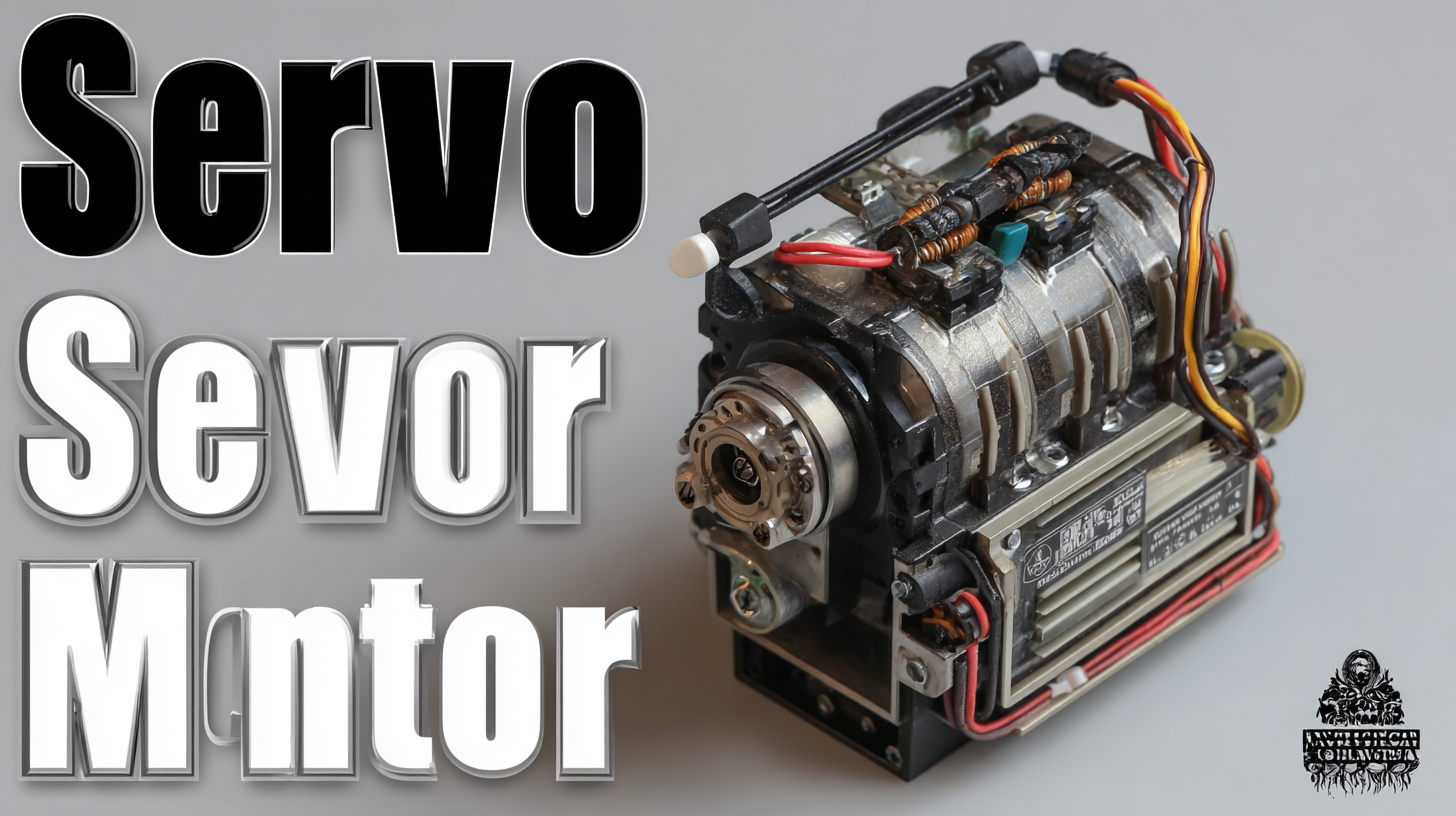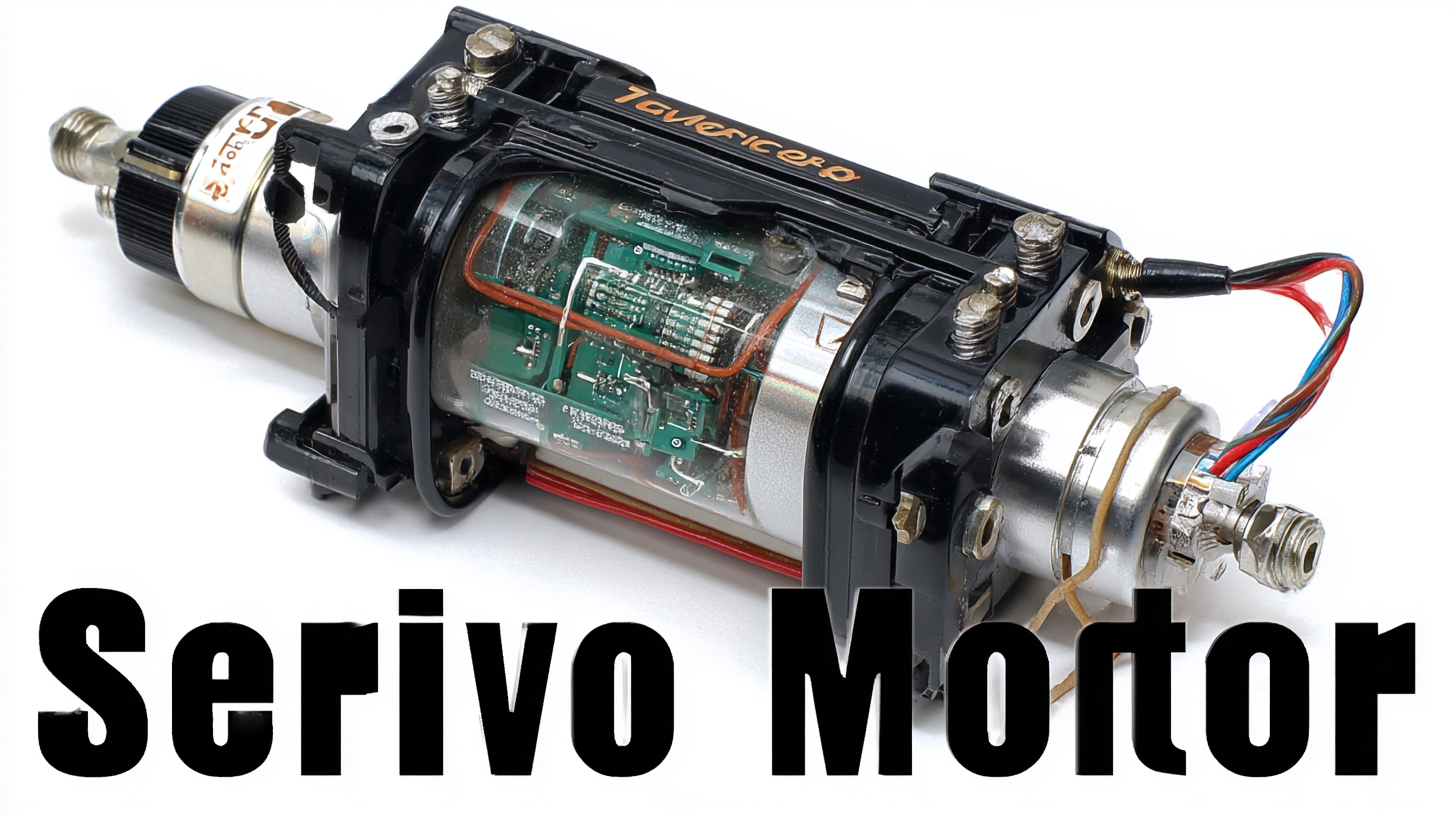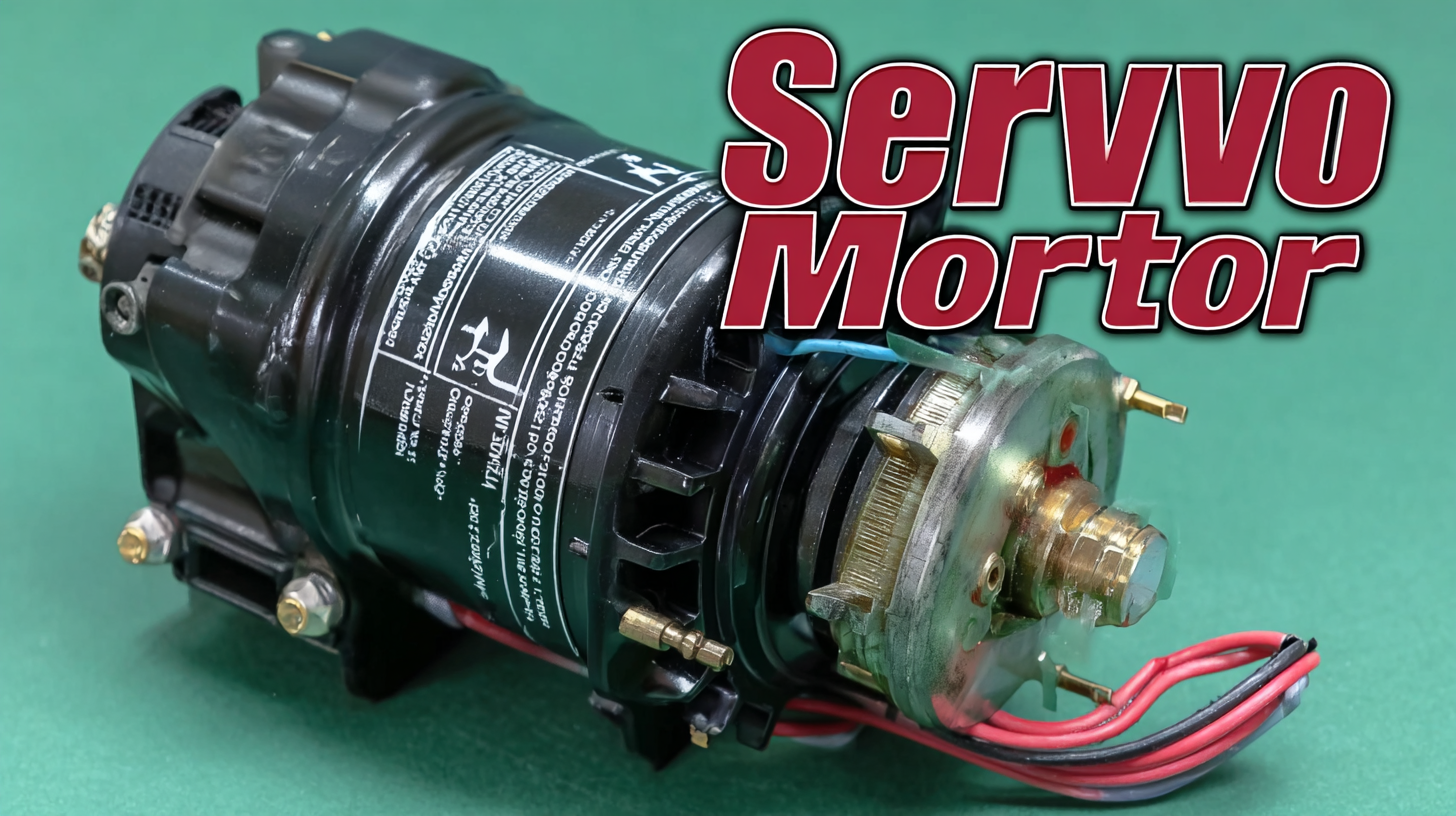
Mastering the Best Servo Motor for Your Projects a Complete Step by Step Guide
 As industries continue to advance, the demand for precision and efficiency in automation has led to an increased focus on components like the Servo Motor. According to a recent report by MarketsandMarkets, the global servo motor market is projected to reach $6.3 billion by 2025, reflecting a robust CAGR of 5.6% from 2020 to 2025. This surge is driven by the expanding applications of servo motors across a variety of sectors, including robotics, aerospace, and manufacturing.
As industries continue to advance, the demand for precision and efficiency in automation has led to an increased focus on components like the Servo Motor. According to a recent report by MarketsandMarkets, the global servo motor market is projected to reach $6.3 billion by 2025, reflecting a robust CAGR of 5.6% from 2020 to 2025. This surge is driven by the expanding applications of servo motors across a variety of sectors, including robotics, aerospace, and manufacturing.
However, selecting the right servo motor for your projects can present challenges such as compatibility with existing systems, thermal performance, and mechanical limitations. In this comprehensive guide, we will explore industry application case studies that highlight the versatility of servo motors while also addressing common problems faced during their implementation. Join us as we dive deeper into mastering servo motors to enhance your projects’ effectiveness and reliability.
Understanding Servo Motors: Types and Applications
Understanding servo motors is crucial as they play a pivotal role in various applications across automation and manufacturing sectors. Servo motors, known for their precision and control, come in different types, including AC and DC servo motors, each tailored for specific tasks. Their ability to provide high-torque outputs in compact sizes makes them ideal for robotics, CNC machinery, and other precision-focused systems. The versatility of servo motors allows them to excel in scenarios requiring rapid acceleration and precise positioning.

In the realm of industrial automation, it's vital to choose the right motor to meet application requirements. Innovations in drive systems, such as upgraded frequency converters and innovative motor designs, enhance motion control capabilities. The latest developments ensure that servo motors maintain high efficiency, particularly in light of new motor efficiency standards aimed at reducing energy consumption across industries. As servo technology evolves, understanding the diverse applications and types available can significantly impact project outcomes and operational efficiency.
Key Factors to Consider When Choosing a Servo Motor
When selecting the best servo motor for your projects, especially for applications in the automotive and healthcare sectors, several key factors must be taken into account. First, consider the torque requirements of your application. Whether you're working on power steering columns or robotics in surgical environments, understanding the torque needed for precise movement is crucial. Typically, higher torque servo motors are needed for heavy-duty applications, while lighter tasks can utilize smaller motors.
Another important aspect is the motor's speed and response time. In assembly line automation and HVAC systems, quick and accurate response times increase efficiency and productivity. Choose a servo motor that offers the necessary speed for your specific use case. Additionally, evaluate the control options available; some motors integrate seamlessly with various control systems, making them easier to implement in existing setups.
As the robotics motor market continues to grow, projected to reach nearly $19 billion by 2032, selecting the right servo motor will significantly impact performance and reliability in your projects.
Step-by-Step Guide to Wiring and Installing Your Servo Motor
When it comes to wiring and installing a servo motor for your projects, understanding the fundamentals is crucial.
Step-by-step guidance is essential for beginners to ensure that every connection is made correctly and that the servo motor operates as intended.
Start by gathering your components, including the servo motor, an Arduino board, and necessary wires. Familiarize yourself with the servo motor’s specifications, such as its power range and control signals, as these factors will influence your installation process.
Once you have your materials ready, the wiring can begin. Connect the control wire of the servo to one of the digital pins on the Arduino, typically pin 9, while linking the power and ground wires to the respective pins on the board.
It’s important to verify the polarity to avoid damaging the components.
After setting up your connections, programming your Arduino to control the servo motor is the next step. This involves writing a simple sketch that signals the servo to move to specific angles, effectively bringing your project to life.
Remember, practice makes perfect, so don’t hesitate to experiment with different configurations and code adjustments as you master the art of servo motor installation.
Programming Your Servo Motor for Optimal Performance
Programming your servo motor effectively is crucial for achieving optimal performance in your projects. One essential factor to consider is the implementation of advanced control techniques, such as optimal fuzzy-PID control. This approach not only enhances object tracking capabilities by accurately estimating trajectories but also ensures your servo motor can respond dynamically to changes in its environment. By fine-tuning the control parameters, you can enhance the precision and responsiveness of your servo, making it an invaluable component in robotics and automation applications.
Moreover, utilizing technologies like sensor data optimization can vastly improve your CNC machine tool systems. By integrating real-time sensor feedback into your programming, you can adjust the servo motor's behavior instantly, leading to enhanced operational efficiency. For instance, incorporating techniques like particle swarm optimization (PSO) can significantly refine the performance of the servo drive in cutting applications, maximizing speed and accuracy. As you embark on programming your servo motor, exploring these cutting-edge methodologies will help you unlock its full potential in an array of challenging tasks.

Real-World Project Examples Using Different Servo Motors
When it comes to utilizing servo motors in real-world projects, the versatility and precision they offer can significantly enhance the functionality of your designs. For instance, when incorporated into robotics, servos allow for smooth motion control, making them ideal for applications such as robotic arms or automated vehicles. A straightforward project like building a simple robotic arm can illustrate the basic principles of servo motor operation while providing an engaging hands-on experience. By varying the type of servo used—standard, continuous rotation, or coreless—you can explore different aspects of mechanical movement and control.
Another exciting application is the use of servo motors in 3D printing. Upgrading your 3D printer with servo motors can lead to improved accuracy and speed. Projects that integrate servos for automatic bed leveling or filament feed systems showcase their practical benefits in the realm of additive manufacturing. By experimenting with different servo configurations and control methods, such as PWM signals from an Arduino, you gain invaluable insights into optimizing your project’s performance. These real-world examples not only enhance your understanding of servo motors but also inspire innovative approaches to design and functionality in your projects.
